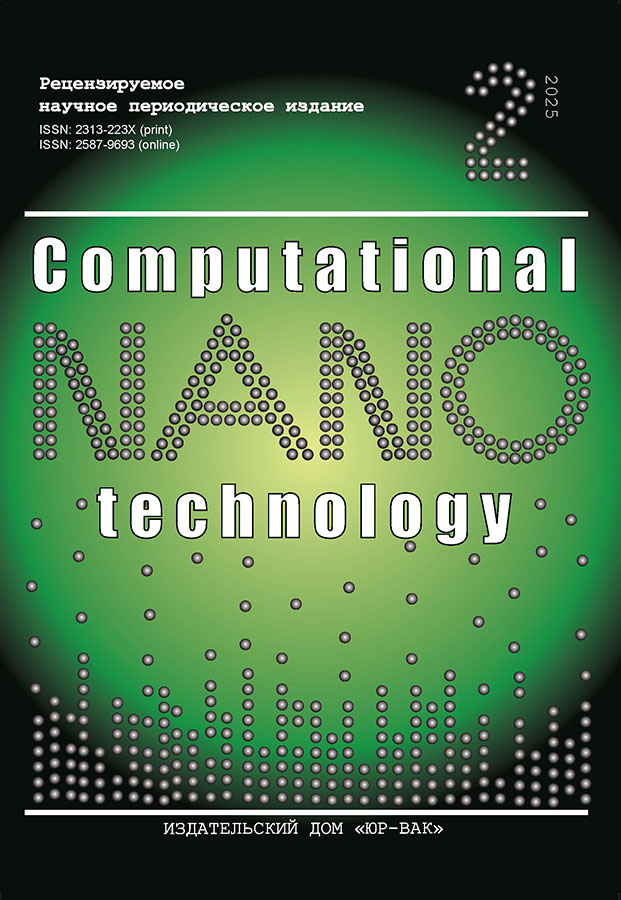Forecasting silicon ore concentrate yield using machine learning methods
- Authors: Buslaeva O.S.1, Konov V.A.1, Palei A.G.1, Ushakov N.A.1
-
Affiliations:
- South Ural State University
- Issue: Vol 12, No 2 (2025)
- Pages: 142-149
- Section: Intelligent Technical Systems in Manufacturing and Industrial Practice
- URL: https://journals.eco-vector.com/2313-223X/article/view/689244
- DOI: https://doi.org/10.33693/2313-223X-2025-12-2-142-149
- EDN: https://elibrary.ru/RBANJL
- ID: 689244
Cite item
Abstract
The article effectively applies machine learning methods to predict the production of silicon ore concentrate. The problem of silica content control is a problem for the mining industry, since the quality of the final product and its cost depend on it [9; 10]. During the study, the data obtained from the flotation plant after their preliminary processing were used to identify the most dynamically changing factors (flotation indicators). Random forest and recurrent convolutional neural network LSTM models were trained with different sets of input features. The quality of the models used was assessed using the mean square error (MSE), mean absolute error (MAE) and determination coefficient (R-squared) metrics. As a result of the experiments, it was found that instant flotation indicators have a lesser effect on improving the quality of the forecast, and unique variables taken with different lags lead to an increase in accuracy. The results of the study can be used at enterprises engaged in the processing of silicon ore for more complete automation and optimization of flotation control processes.
Full Text
About the authors
Olga S. Buslaeva
South Ural State University
Author for correspondence.
Email: buslaevaos@susu.ru
ORCID iD: 0000-0002-7763-527X
SPIN-code: 7432-6003
Scopus Author ID: 57221265394
Cand. Sci. (Eng.); associate professor, Department of Digital Economy and Computer Science
Russian Federation, ChelyabinskVyacheslav A. Konov
South Ural State University
Email: konovva@susu.ru
ORCID iD: 0009-0004-8489-2997
SPIN-code: 2502-5832
Cand. Sci. (Eng.); associate professor, Department of Digital Economy and Computer Science
Russian Federation, ChelyabinskAleksandr G. Palei
South Ural State University
Email: paleiag@susu.ru
ORCID iD: 0009-0005-3793-301X
SPIN-code: 5542-6772
Scopus Author ID: 57205615841
Cand. Sci. (Eng.); associate professor, Department of Digital Economy and Computer Science
Russian Federation, ChelyabinskNikolai A. Ushakov
South Ural State University
Email: kashak2000@gmail.com
postgraduate student; Department of Digital Economy and Computer Science
Russian Federation, ChelyabinskReferences
- Pavlov A.V., Polinov A.A., Spirin N.А. et al. Use of model systems for solving new technological problems in blast-furnace production. Metallurgist. 2017. No. 61 (5-6). Pp. 448–454. doi: 10.1007/s11015-017-0516-7.
- Spirin N.A., Polinov A.A., Gurin I.A. et al. Information system for real-time prediction of the silicon content of iron in a blast furnace. Metallurgist. 2020. No. 63 (9-10). Pp. 898–905. doi: 10.1007/s11015-020-00907-y.
- Pavlov A.V., Spirin N.A., Gurin I.A. et al. Information-modeling system for prediction of the composition and properties of final slag in a blast furnace in real time. Izvestiya. Ferrous Metallurgy. 2023. No. 66 (2). Pp. 245–252. (In Rus.). doi: 10.17073/0368-0797-2023-2-245-252.
- Song J., Xing X., Pang Z., Lv M. Prediction of silicon content in the hot metal of a blast furnace based on FPA-BP model. Metals. 2023. No. 13. P. 918. doi: 10.3390/met13050918.
- Spirin N.A., Lavrov V.V., Rybolovlev V.Yu. et al. Digital transformation of pyrometallurgical technologies: State, scientifc problems and prospects of development. Izvestiya. Ferrous Metallurgy. 2021. No. 64 (8). Pp. 588–598. (In Rus.). doi: 10.17073/0368-0797-2021-8-588-598.
- Zhou H., Zhang Y., Yang C., Sun Y. Deep learning based silicon content estimation in ironmaking process. IFAC-PapersOnLine. 2020. Vol. 53. No. 2. Pp. 10737–10742. doi: 10.1016/j.ifacol.2020.12.2854.
- Fomicheva S.G., Konev A.V. Adaptive control system for silicon oxide concentration in slags at processing copper-nickel ores. Software & Systems. 2014. No. 3 (107). Pp. 31–140. (In Rus.). EDN: TPOVTV.
- Sokolov B.V., Yusupov R.M. The conceptual and technical basics for qualimetry of models and multiple-model complexes. News of RAS. Theory and Control Systems. 2004. No. 6. Pp. 6–16. (In Rus.). EDN: OSKXTP.
- Kaung P.A., Isakov A.E., Panfilov I.A. et al. Principles for forming environmentally safe and economically effective sustainable development of geo resources. MIAB. Mining Inf. Anal. Bull. 2024. No. 7-1. Pp. 159–175.
- Yang K., Hu C. A prediction method of silicon content in hot metal of blast furnace. Metallurgiya. 2022. Vol. 61. No. 3-4. Pp. 581–584.
- Drumond P., Kappes D., Moraes C. de et al. Soft sensor: Machine learning tradicional ou deep learning? 22°. Seminário de Automação e TI. São Paulo, 2018. Pp. 231–242. doi: 10.5151/2237-0234-31915.
Supplementary files













